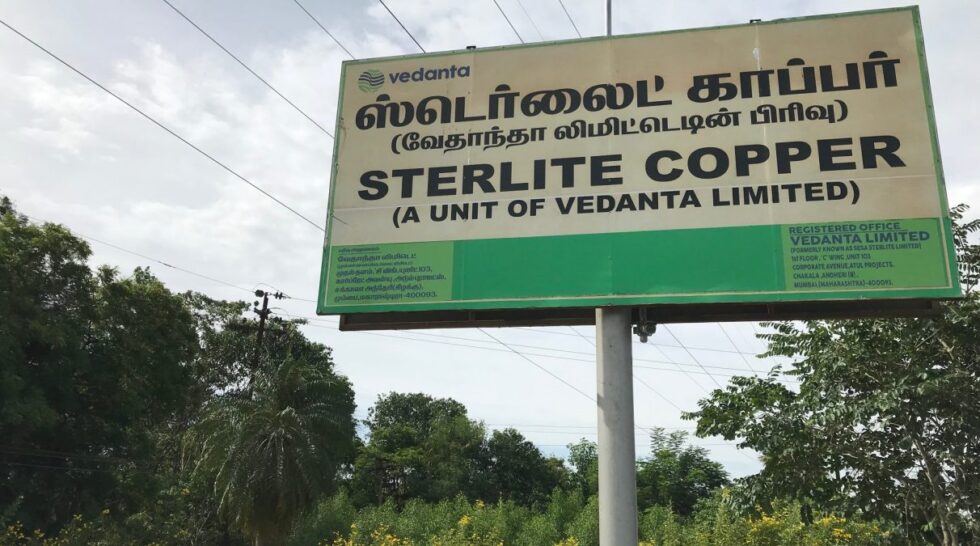
Sterlite Copper: A Case of the anti-Indian lobby, Conspiracy, Govt apathy, and public ignorance: While copper prices are rising, we are satisfied importing copper and keeping our plants shut.
Disclaimer: This post is mainly based on inputs received by us from secondary sources.
Background and Introduction:
We have written on the Sterlite copper plant and the conspiracy surrounding shutting off the plant a few years back. IN fact, we received a reply from former defense minister late sh Manhor Parrikkar ji to do more research on the topic and bring it to light. IN national interest we are compelled to take up the issue again and hope the government and others will take up the issue seriously and make sure that the Sterlite copper plant is opened asap.
All countries in the world are in the process of evolving to clean energy systems in the 21st Century. LITHIUM, COBALT & COPPER are critical minerals essential to this evolution. China’s ability to leverage the minerals is aimed at controlling the strategic development of other developing economies in its neighborhood, in competition to other countries. China’s policy consists mainly of controlling the mining & production centers by manipulating the local conditions and population to their advantage. This can be understood by looking at the copper production scenario in India & how it is being manipulated to the disadvantage of the country’s strategic security in this regard. China has made a strategic policy to capture rare earth minerals and other mines in Africa and also in Afghanistan besides other locations. India has failed to understand this larger game that is happening with due ignorance and apathy. From semiconductors to batteries there is a race to capture and blackmail supply chain logistics. Materials like copper, lithium, and other play a major role in all such strategic applications and manufacturing.
The Chinese Game and play at work
Global Copper consumption is 23 million tonnes. China produced 9 million tonnes & consumed 12.6 million tonnes in 2020. India produced 1 million tonnes across three plants in 2017-18. Subsequent to the stoppage of Sterlite Copper, India’s production has slumped to 0.6 million tonnes. India’s copper demand is expected to grow to 2 million tonnes by 2030. India has thus become a net importer of copper consequent to the stoppage of the Sterlite plant. India’s reserves of copper ore are negligible. Much of the demand for the mineral is met by the conversion of imported copper concentrates into refined copper in production centers. Thus, control of copper mines in the world & the production of refined copper out of copper concentrates becomes an important indicator of strategic security for the country.China has acquired a majority stake at copper mines mostly in Africa, Australia South America which together accounts for over 40% global copper supply [1] . In many cases it has adopted methods to coerce the mine owners by making the mine a financial liability and thereafter acquiring a controlling stake. Presently, China is adopting this tactic to control the Tethyan copper project in Baluchistan and force the dispute between the State & Joint venture owner of the Reko Dig deposit. The current deposit of 20.46 million tonnes of copper is significant. The present joint venture owners are Chilean miner Antofagasta & Canadian miner Barrick Gold. Baluchistan will be the nearest supplier of copper concentrate to India. The forced stoppage of production at the Sterlite plant should be looked at from the advantage it gives to China on account of India becoming a net importer of the material for the past three years. This impacts India’s growth in the data, energy & communication sectors. Sterlite Copper in 2017-18 had announced plans to increase production capacity from 0.4 million tonnes to 0.8 million tonnes at their plant in Tuticorin. The expanded plant would make Sterlite Copper the largest production plant in South Asia & the world by 2020. India’s overall copper production capacity would have increased from 1 million tonnes to 1.4 million tonnes making India “Atmanirbhar” in copper production. In financial terms, the stoppage of the plant has caused India to incur a forex outflow of US $ 1.2 billion per annum (2019-20) and to further increase in the coming years. The early reopening of the Sterlite Copper plant which has been closed arbitrarily needs to be expedited for attaining self-sufficiency in copper & stemming the outflow of foreign exchange. An incisive analysis of the events leading to the closure of the Sterlite Plant was taken up by the stakeholders & it unravels startling disclosures about the external linkage and the insidious nature of the protests which are briefly explained for underlining the seriousness of the issues. The Sterlite plant was forcibly closed by the State Government & the matter is now pending before the Supreme Court. Although there were episodic protests by isolated elements the 4 lakh tonnes per annum production plant was running continuously for over 25 years. The company had undertaken measures to make the plant compliant with international environment standards. The announcement & approval to double the capacity of the plant led to a new series of protests by vested interests with ulterior motives. The protestors made unwarranted allegations to mislead the public and civil society about the plant. The use of wide publicity materials, placards & rallies, spreading disinformation & lies forestalled any possible resolution by the company to mitigate the protests. There were no credible demands to be attended to & the protestors unjustly called for the closure of the company. The location of the Sterlite Copper plant also has other strategic investments of the country. These include;
● Kudankulam Nuclear Power Plant in Tirunelveli (repeatedly facing protests by the same vested interests)
● ISRO rocket launch pad in Thoothkudi
● Neutrino Observatory in Theni (not allowed to start operations by the same vested interests)
The analysis of open-source data leads to a strong suspicion of the linkage of agitations to funding from external entities to sustain a prolonged agitation.
The misuse of the FCRA Act & its associated Rules for routing foreign contribution was clearly apparent. It was observed that the violations in reporting acceptance & utilization of Foreign Contribution are not restricted to a few entities alone & appear to be a widespread phenomenon that needs to be examined by appropriate authorities.
1. India has over 300 active FCRA registered entities whose foreign contribution cannot be traced owing to the non-declaration of information
apart from their registration number
2. 4000 active FCRA registered entities that have received over 8500 crores from 2010-11 to 2020-21 have not indicated where the money was utilized which may indicate a violation of FCRA Rule 13
3. 254 FCRA registered entities in India have uploaded annual returns. However, banks in their declaration to the Central Government have not identified the bank account held for the 254 entities. This may indicate a violation of Rule 13 & 16 of the FCRA Rules.
4. 7 FCRA registered entities whose registration under the FCRA Act was canceled in 2012 continued to receive foreign contributions in excess of 16 crores in the succeeding years. Similarly, 12 FCRA registered entities that were canceled in 2015 received in excess of 8.6 crores in the years following their cancellation which may indicate a violation of Section 14 of the FCRA Act.
5. The routing of foreign contribution by the FCRA registered entities to construction entities, post-cancellation of their license may indicate a violation of Rule 15 of the FCRA Rules.
6. The routing of foreign contributions by FCRA registered entities to entities that are not registered under the FCRA Act may indicate a violation of Rule 24 of the FCRA Rules.It would be of strategic interest to India to safeguard its materials and production centers which would otherwise repeatedly face adverse protests & agitations of the nature experienced by the Sterlite Copper plant. This has consequences for India’s development plan & Security and the need govt attention at the earliest and urgent level.
With Best Wishes
Dr Asheesh Shah
For
Samanvaya.org.in
Reference:
1. Wood Mckenzie 2021


